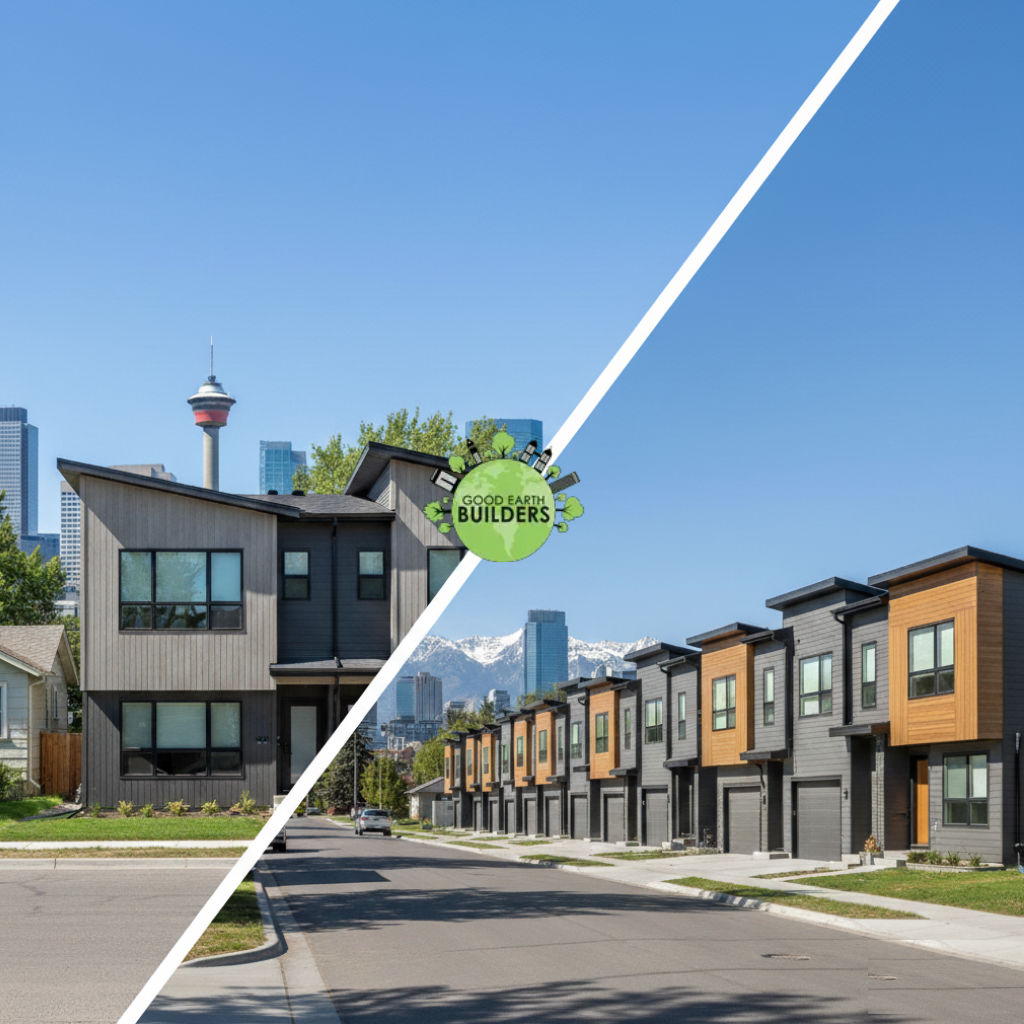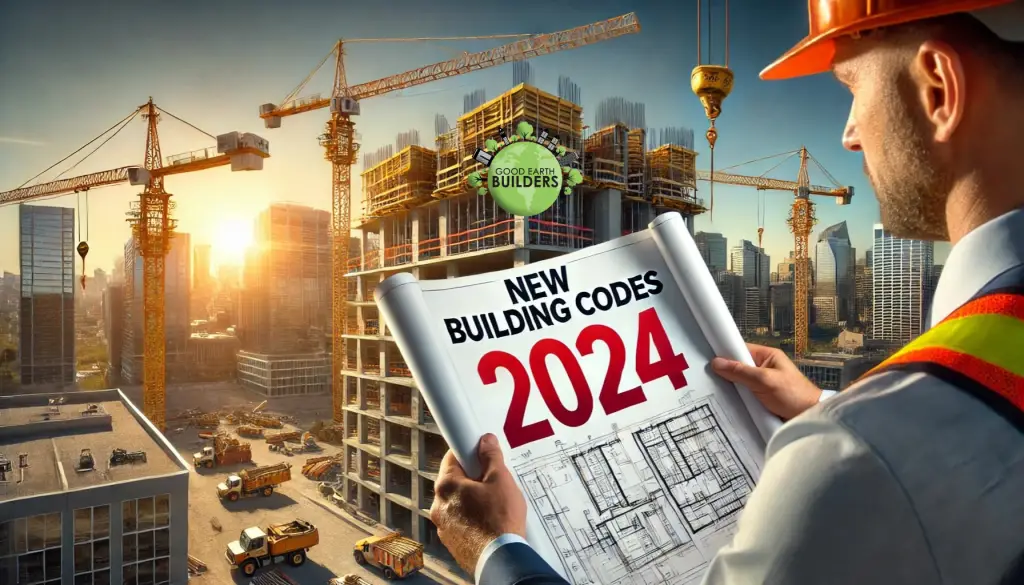Monday, November 03, 2025
The dynamics of the Calgary real estate market have shifted dramatically. No longer is the massive detached home the guaranteed path to superior returns. Today’s market is defined by a fundamental push toward density, affordability, and municipal efficiency, making semi-detached and row housing (townhomes) the new frontrunners in the infill investment space.
In 2025, the investment landscape favours assets that meet the needs of a rapidly growing population while maximizing the use of increasingly expensive inner-city land. This detailed guide explores the market forces, financial logic, and strategic advantages that position attached infill housing as the smartest investment for the coming years.
I. The Calgary Market Reset: The Imperative for Density 🏙️
Calgary’s housing sector is recalibrating following a period of unprecedented price growth and population expansion. The core market drivers now point overwhelmingly toward multi-unit, ground-oriented solutions.
A. The Migration Effect: Unprecedented Demand and Supply Strain
Calgary continues to be an economic magnet, attracting tens of thousands of new residents annually. While this population boom drives demand across all segments, it creates an extreme supply strain in the affordable, family-friendly category.
- The Affordability Crisis: Benchmark prices for detached homes, while seeing some recent moderation, remain out of reach for many new arrivals and young families. This group is forced to seek alternatives.
- The Semi-Detached Sweet Spot: Semi-detached homes, which are generally seeing stable benchmark prices and even slight year-over-year gains in some districts (up 0.9% as of late 2025), occupy the perfect middle ground. They offer the privacy and individual access of a detached home without the prohibitively high price tag. For investors, this translates into a massive, highly motivated buyer pool.
- Row Housing as an Entry Point: Row houses (townhomes), with a lower benchmark price point (around $437,100 as of late 2025), serve as an essential entry point. Although this segment has seen price adjustments due to a surge in inventory (up 46.3% year-over-year), their affordability keeps long-term demand solid, particularly for rental-focused investors seeking immediate cash flow.
B. The Zoning Catalyst: De-Risking Infill with R-CG
The most profound shift driving infill investment is the City of Calgary’s commitment to Rezoning for Housing, primarily through the Residential – Grade-Oriented Infill (R-CG) District. This zoning change is a strategic municipal tool designed to encourage density and reduce the bureaucratic hurdles that traditionally hampered infill.
- R-CG Flexibility: R-CG accommodates a mix of housing, including semi-detached dwellings, secondary suites, and rowhouses, all of which are grade-oriented (meaning separate, direct access to the street).
- The Permitted vs. Discretionary Shift: Historically, obtaining permits for multi-unit projects was lengthy and uncertain. While some recent amendments have categorized rowhouses and townhouses as ‘discretionary’ rather than ‘permitted’ uses in R-CG zones—meaning they still require review and community feedback—semi-detached dwellings have generally maintained their status as a more predictable and often permitted use. This predictability in the semi-detached category significantly de-risks the investment, making it highly attractive to developers targeting a smoother, faster project cycle.
- Increased Unit Yield: R-CG allows for a maximum density of 75 units per hectare, translating to a potential four units (plus four basement suites) on certain standard-sized lots. This regulatory framework ensures that building attached units is the financially optimal way to use the land.
II. The ROI Engine: Financial Superiority of Attached Infill 💰
The true power of semi-detached and row housing lies in the financial mathematics of land development.
A. Maximizing Land Efficiency: The Cost Per Door Metric
In Calgary’s inner-city, the land acquisition cost is the largest single project expense. The success of an infill project hinges on how effectively this cost is distributed across saleable units—the Cost Per Door metric.
- Detached Infill Drawback: A $1,000,000 inner-city lot results in a land cost of $1,000,000 per door.
- Semi-Detached Advantage: The same $1,000,000 lot, when split into two semi-detached units, immediately halves the land cost to $500,000 per door. This allows the finished product to be priced significantly lower than a detached infill while maintaining a healthy profit margin.
- Row House Leverage: Row housing offers even greater leverage, potentially spreading the $1,000,000 land cost across four to eight doors (including basement suites), dramatically dropping the Cost Per Door and opening the door to the most affordable price points, catering directly to the first-time buyer segment.
B. Construction Synergy: Built-In Cost Savings
Building two or more attached units simultaneously unlocks economies of scale unavailable to detached builders, directly improving the bottom line.
- Shared Infrastructure: The use of a shared party wall dramatically reduces hard costs. It eliminates the need for one full exterior wall assembly (siding, weather wrap, redundant insulation, and sometimes even foundation waterproofing on that side). This is a substantial material saving.
- Volume Purchasing: A contractor building four row house units can purchase windows, HVAC units, plumbing fixtures, and flooring in bulk, securing deeper trade discounts than a single-home builder.
- Labour Efficiency: Trades can replicate their work across identical units, leading to faster execution, fewer errors, and a more predictable construction schedule. Reduced time on site directly translates to lower carrying costs (interest paid on the construction loan) for the investor, maximizing profit.
C. The Principal Residence Exemption (PRE) Strategy
For owner-investors, the semi-detached model is unmatched due to its tax efficiency. An investor can move into one unit, designate it as their primary residence, and rent out or sell the other unit for immediate cash flow. Upon the future sale of the property, the appreciation realized on the principal residence half may be exempt from Capital Gains Tax, providing a unique opportunity for tax-sheltered wealth generation while the rental income helps pay the mortgage.
III. Construction Risk and Market Resilience 🛡️
In a shifting market where inventory has surged (up 36.5% year-over-year overall) and days on market are longer, risk mitigation is paramount. Attached infill provides a defensive advantage.
A. Predictable Demand and Market Stability
While the overall market slows down, semi-detached properties have shown the most resilience in price stability, with benchmark prices holding steady or slightly rising. This is not the case for apartments and row houses, which have faced price adjustments due to significant inventory increases. This resilience makes the semi-detached segment a safer bet for builders seeking predictable returns.
- Targeted Buyer: The semi-detached buyer is typically more financially secure than the first-time condo buyer, making the sale less vulnerable to economic volatility.
- Rental Market Strength: Calgary’s rental market, despite rising vacancy rates (up to 4.6% in 2024), continues to command strong rental prices due to high demand from migration. Row houses and semi-detached units with legal basement suites (which are permitted in R-CG zones) are ideal Build-to-Rent (BTR) assets, providing two income streams from one tax parcel and maximizing Cash-on-Cash Return.
B. Future-Proofing with Technology and Location
Infill investment is intrinsically future-proof because it is located in established communities with existing infrastructure (transit, schools, amenities).
- Green Line & TOD: Investment in areas along the future Green Line LRT expansion or existing Transit-Oriented Development (TOD) corridors ensures long-term demand, regardless of temporary market cycles.
- Energy Code Compliance: New construction, including all attached infill, is mandated to meet strict, modern energy efficiency codes (Part 9.36 of the Alberta Building Code). This creates a highly desirable product that appeals to modern buyers looking for lower utility bills—a critical selling point that distinguishes new infill from older detached housing stock. Features like EV-ready garages and superior insulation are standard in these new builds, protecting the investment against future obsolescence.
Conclusion: The New Gold Standard for Calgary Investment
The Calgary housing market in 2025 is not retreating; it is rebalancing. This new equilibrium strongly favours the efficient, affordable, and strategically dense housing forms of semi-detached and row housing. By maximizing land yield, exploiting construction synergy, and aligning perfectly with municipal policy and demographic needs, these attached homes have solidified their position as the most profitable and predictable infill investment vehicles in the city.
Successful investors will be those who recognize this shift early and choose partners capable of executing these complex, multi-unit projects with precision and code compliance.
⭐ Partner with a Builder Driven by Code Compliance and Quality: Good Earth Builders
Achieving superior returns in Calgary’s competitive infill market requires more than just good timing; it demands flawless execution of the financial and regulatory strategy.
At Good Earth Builders, we specialize in transforming single inner-city lots into high-yield, multi-unit assets. Our approach is engineered to leverage the semi-detached and row house advantage by:
- Guaranteeing Regulatory Compliance: We navigate the R-CG and Alberta Building Code requirements for party walls, secondary suites, and zoning setbacks, ensuring a streamlined Development and Building Permit process.
- Optimizing Cost Per Door: Our VDC (Virtual Design and Construction) technology and established trade network ensure cost efficiency and risk mitigation, turning the theoretical ROI into guaranteed profit.
- Delivering Build-to-Rent Excellence: We construct robust, energy-efficient assets that minimize ongoing maintenance costs, maximizing your Net Operating Income (NOI) for long-term hold strategies.
Ready to move from a single-home focus to a resilient, high-density infill investment strategy in Calgary?
📞Contact Good Earth Builders today for a no-obligation feasibility study and let us help you build your investment goldmine.




